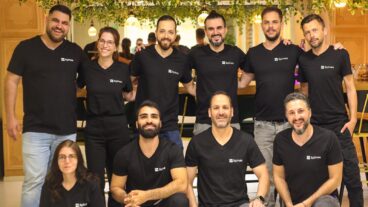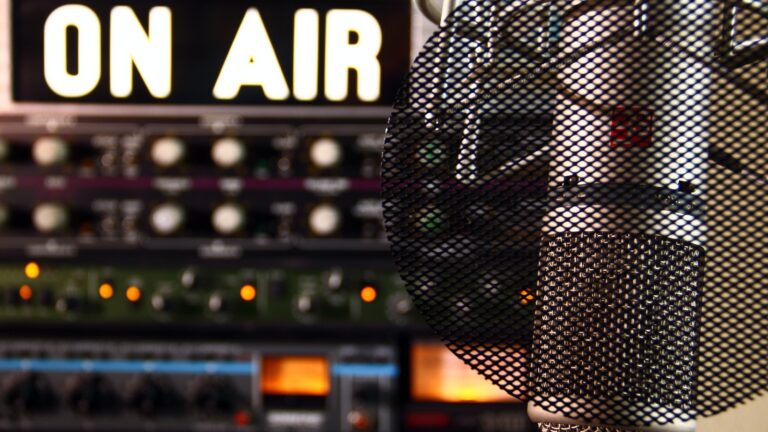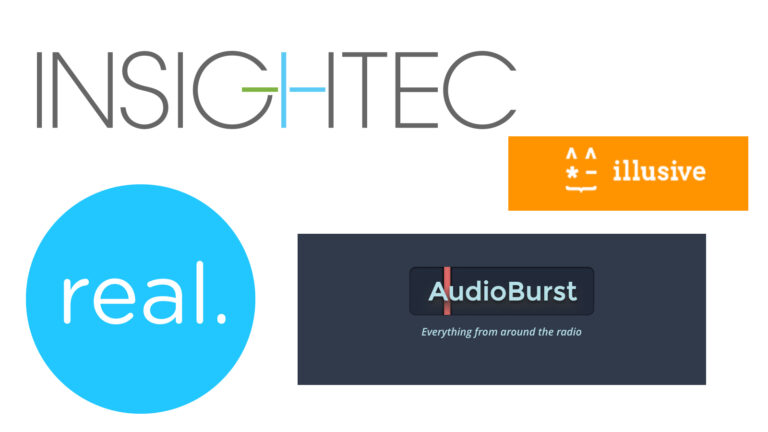The days of aimlessly scanning through AM/FM radio stations in search of something that interests you may be coming to an end. An Israeli startup is organizing the world’s audio so that you can instantly find and listen to any piece of audio from anywhere, on demand.
Tel Aviv-based Audioburst has developed an AI-powered technology that can listen to millions of minutes of live and pre-recorded audio content each day – podcasts, radio shows and other audio sources – and break them down into individual, indexed audio clips that are searchable.
“Most of the content around us is well organized and accessible to search engines. Websites, images, and videos are very easy to find and listen to or view. But when it comes to audio, it’s been left behind,” Assaf Gad, vice president of marketing at Audioburst, tells ISRAEL21c.
When the company was founded three years ago, Gad said they spent a lot of time trying to convince people why audio is so important, despite video being the main content that people were consuming at the time.
Today, thanks to the increasing popularity of voice assistants like Alexa and Google Assistant, and the abundance of podcasts being created by radio stations, brands, and media companies, more and more people are interacting with audio throughout their day, Gad explains.
While most voice assistants use text-based search engines to deliver information, Audioburst provides results to queries with actual human voices from radio, TV or other audio sources. If you ask for the weather, for example, you’ll be fed an audio clip from the nearest local news station.
Instead of building a consumer-facing application or interface (like Google), Audioburst teams up with companies and products that already have listeners.
Smart speakers, car manufacturers, mobile apps, smart TVs and virtually any product or app that has the ability to play audio are potential collaborators for Audioburst. Already on their list of partners are Samsung, Harman, Bose, Nippon Broadcasting System and mobile apps like Smart News and Radio Line.
People can find the latest news on a specific topic that aired on radio, TV or podcasts by using simple search terms and phrases. In-car entertainment systems and smart speakers can use Audioburst to create completely personalized listening experiences for each user using “listening identities” based on their interests and listening patterns.

“At the end of the day, you basically get your own radio station. It’s completely interactive. If something is not interesting, you can say ‘skip’ and move to the next item. If something is super interesting and you want to learn more about it, you can ask for more,” explains Gad. “We are actually changing the way people consume audio.”
Twitter for Audio
What makes Audioburst unique is its ability to segment (break audio into little pieces) and index (make it available through data tagging based on the content).
“Think of it like the ‘Twitter of audio’ in a sense,” says Gad.
The technology allows the user to consume and understand the context of a specific piece of audio, either as an answer to a query or as part of a personalized playlist, while linking back to the original source. As a result, it’s no longer necessary to consume full one-hour podcasts or radio shows.
When it comes to search, Audioburst listens word by word to the content and creates its own metadata tags based on the topics discussed. This makes the content of podcast episodes and radio streams discoverable by search engines in the same way as text articles.
Audioburst expands its database of audio sources by partnering with broadcasters and radio stations in different regions. Currently it has partners in the US, Australia and UK, with sights set on Japan as the company’s next market.
The advantages for content owners and creators working with Audioburst are a wider audience, a longer shelf life, and new ways to monetize their content with personalized voice ads.
“There is great content that is produced every second out there. The minute after it airs, it’s usually gone away. We are making it available on devices and platforms that would never have a chance to actually play this type of content,” Gad says.
Audioburst Creators
Once a broadcast gets segmented, indexed and stored on Audioburst’s database, it becomes more accessible and relevant for a longer period of time.
Audioburst has developed a set of tools dubbed Audioburst Creators that let content creators see analytics about how their audio is segmented and indexed by the platform. They also have the ability to make adjustments to help the AI index in a more accurate way.
While Audioburst is mainly focused on radio stations and podcasts, its partnership with Samsung, announced in March, will put the company’s technology into millions of Samsung products, beginning with smart TVs. In August, a partnership was signed with Nippon Broadcasting System to support and build new voice technology products relying on Audioburst’s AI-based voice search platform, especially for the Japanese market.
“People are buying smart speakers and putting them in different rooms, while they already have a very smart and sophisticated speaker available through their TV. Why not make their TV just like any other Alexa or Google Home device?” said Gad.
The $4.6 million investment from Samsung Ventures in March, followed by the $3 million Nippon Broadcasting System investment in August, brings the Israeli company’s total Series A funding round to $14.4 million. Other investors include Advanced Media, the Japanese voice recognition technology, as well as Flint Capital, 2B Angels and a Mobileye investors consortium.
Audioburst currently has offices in Tel Aviv, Palo Alto and New York.
















